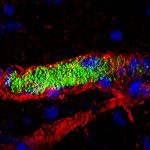Link to Pubmed [PMID] – 17613811
Microcirculation 2007 Jun-Jul;14(4-5):403-38
The present review, to the authors’ knowledge, is the first to specifically address the relationships between microcirculation and metabolic syndrome, a cluster of metabolic and cardiovascular modifications highly prevalent in the general population. Its close link to overweight and insulin resistance makes it the main cause of the worldwide burden of type 2 diabetes. However, metabolic syndrome is also observed in many other diseases, particularly, but not exclusively, those where insulin resistance is a main feature. Analysis of the literature reveals that this clinical situation is invariably linked to microvascular disturbances, such as abnormalities in arteriolar reactivity, capillary recruitment, permeability, and hemorheology. A particularly interesting observation is that these defects in small vessel structure and function are seen very early in life or disease. Very importantly, they further suggest that microcirculatory abnormalities may be not only secondary but also causal to the development and/or aggravation of insulin resistance and metabolic syndrome. Mechanisms responsible for these modifications remain largely unknown, but insulin’s vascular effects in the microvascular network, detailed in this review, are at least one example of such connections. The existing data point to a clear, at least bidirectional, relationship between microcirculation and metabolic syndrome. Additional studies should determine the level of reciprocal causality.

